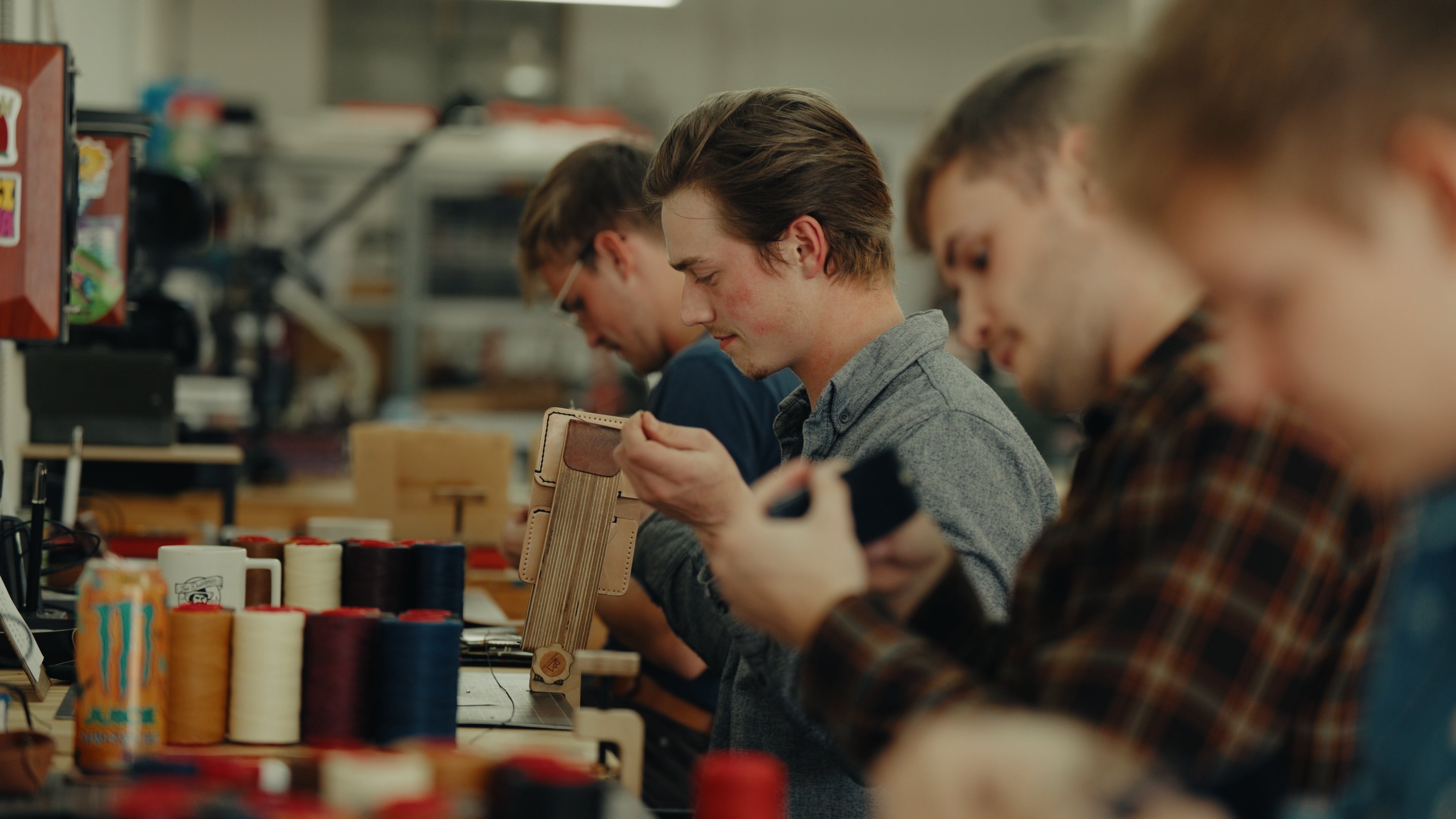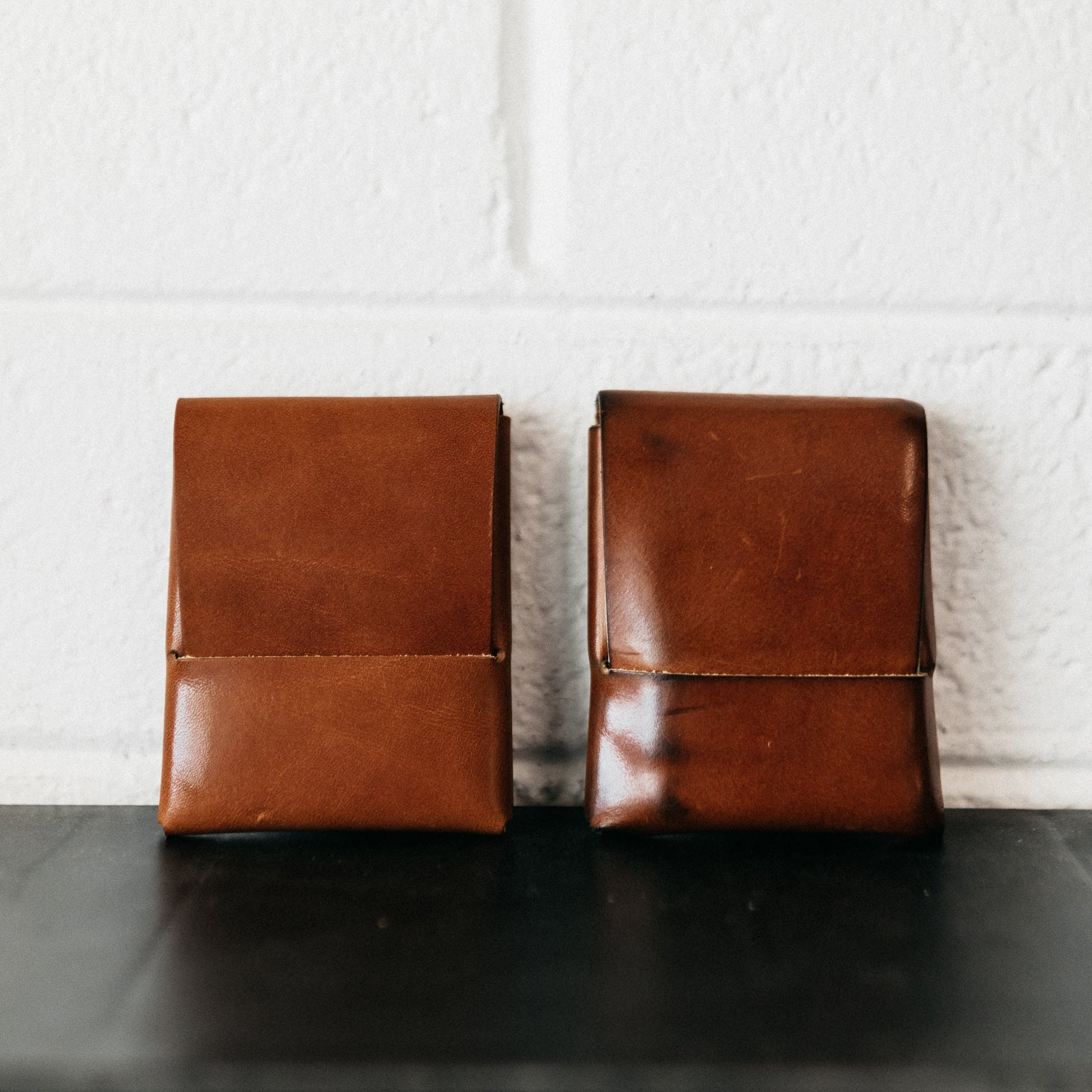
Handmade vs Factory-Made Leather Goods: Key Differences
The way a leather product is created says as much about its soul as it does about its durability. Some are shaped by hand, with an artisan leaning over a workbench, cutting and stitching with patience and care. Others are produced on assembly lines, the product of machines designed for efficiency. Neither approach is inherently wrong. Both exist to serve different needs.
But understanding the Handmade Key Differences between these approaches changes how you see your purchase. It helps you distinguish between something you replace in a year and something you carry for a lifetime.
The Philosophy of Handcrafting
Handmade leather goods begin with intention. The artisan chooses the leather themselves, cutting, stitching, and finishing each piece as though it will carry a legacy. The process is slower, but the slowness is deliberate.
A handmade wallet, for example, isn’t just stitched together. It’s saddle-stitched, using two needles that interlock threads in a way machines can’t replicate. This creates seams that won’t unravel, even under decades of strain. Each detail is inspected, adjusted, and refined.
It’s similar to a craftsman sanding wood grain smooth by hand. The difference lies not only in outcome but in spirit. The object feels more alive because a human being invested their time, skill, and pride into its making.
Products like The Franklin and The Dutchman showcase this philosophy, lean, practical designs crafted with the knowledge that details matter more than speed.
The Reality of Factory-Made Leather Goods
On the other side are Factory-Made Leather Goods, born from scale and efficiency. Assembly lines divide the process into steps: one worker cuts, another stitches, and another finishes. Machines dominate, standardizing the output so thousands of identical pieces can be produced quickly.
This model makes leather goods widely available and more affordable. For someone needing a simple wallet or belt at a low cost, factory-made products meet the need. But the emphasis on speed often compromises the finer details.
Stitching is usually lock-stitched by machine. It works, but once the thread breaks in one place, the seam can unravel. Materials are often corrected grain or bonded leather, leathers that look polished when new but lack the resilience of full-grain.
The result is a product that looks good out of the box but rarely grows old with grace.
The Crucial Role of Materials
The choice of leather defines the life of a product. Handmade artisans usually insist on full-grain leather, the strongest and most authentic cut of hide. Full-grain contains the natural grain and fibers, giving it unmatched durability and the ability to develop patina.
This is the same leather used in The Vertical Dutchman or The Belt. Both products are designed to withstand years of use, not months.
Factories, in pursuit of affordability, often rely on split leather, bonded scraps, or corrected hides. These materials are heavily processed, sometimes coated with plastic finishes to look uniform. While inexpensive, they peel and crack instead of aging gracefully.
Analogy: Choosing full-grain over bonded leather is like choosing solid oak over particleboard. One develops richness over time; the other eventually crumbles.
Longevity and Patina
What truly sets handmade apart is not just how it begins, but how it ages.
A handmade wallet or belt develops patina, a soft sheen and darkening of the leather that records every touch, every journey, every year of use. Scuffs blend into character, and wear becomes beauty. No two pieces age alike.
Factory-made goods don’t share this evolution. Coated finishes wear away unevenly, cracks appear, and stitching weakens. Instead of becoming more personal, they simply deteriorate.
This is why items like The Mini Franklin or The Catch-All can last decades, while cheaper alternatives often need replacing within a year or two.
The Human Connection
Beyond durability, handmade goods carry something factories cannot replicate: human presence.
When you hold a handcrafted piece, you’re holding hours of one person’s labor, judgment, and care. That investment creates not just a functional item, but a connection. It feels more meaningful because you know someone shaped it to be used and cherished.
Factories, by their very structure, remove this intimacy. Their strength is in numbers, not in individuality. The product is standardized, efficient, and detached from a single maker’s hand.
At Lost Dutchman Leather, every wallet, lanyard, or coaster set reflects the opposite philosophy: fewer products, more care.
The Ethical and Environmental Dimension
Small-batch artisans often choose to work with ethical tanneries, using vegetable-tanned leathers that rely on natural tannins instead of harsh chemicals. Waste is minimized, with scraps often repurposed for smaller goods.
Factories, because of scale, create more waste and often rely on industrial chrome tanning, faster but harsher on the environment. While improvements are being made in large-scale sustainability, the volume and chemical reliance are hard to ignore.
As consumers grow more conscious of sustainability, these differences become central. Choosing handmade often means choosing a lighter footprint.
Cost Versus Value
At the register, factory-made products win on price. They’re affordable and accessible. But affordability carries hidden costs. Replacing a wallet every 18 months adds up, not just in money, but in waste and frustration.
Handmade goods are investments. The upfront cost is higher, but the payoff comes in longevity. A wallet like The Dutchman may cost more today, but if it lasts ten or twenty years, it’s less expensive, and more meaningful, than replacing a cheaper one again and again.
The same holds true for accessories. A mass-produced belt may stretch and fail after a year, while The Belt is designed for decades of wear.
Making a Conscious Choice
So, what’s the right choice? It depends on your priorities.
-
If cost and accessibility are your top concerns, Factory-Made Leather Goods provide quick, functional solutions.
-
If you value durability, individuality, and a story woven into every stitch, handmade goods are worth the investment.
The key is recognizing what you want your purchase to represent: a disposable tool or a lifelong companion.
Final Thoughts
The Handmade Key Differences lie in more than stitches or hides. They lie in philosophy. Handmade goods reflect care, heritage, and permanence. Factory-made goods reflect efficiency, accessibility, and mass appeal. Both have their place, but only one can grow old with you.
Explore the full Wallets Collection at Lost Dutchman Leather to see the difference for yourself. From wallets like The Franklin to belts, lanyards, and catch-alls, each piece is a reminder that craftsmanship isn’t just about making products, it’s about making them matter.
For guidance on choosing leather goods built to last, get in touch. We’re here to help you find a companion, not just a purchase.


